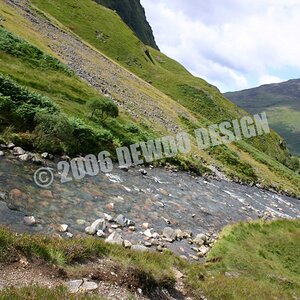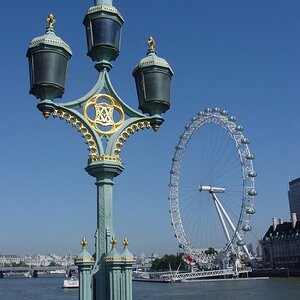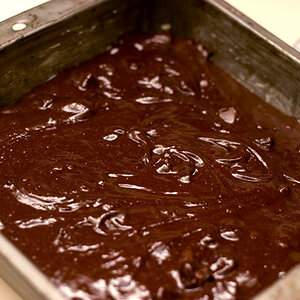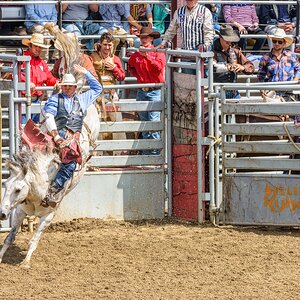Navigation
Install the app
How to install the app on iOS
Follow along with the video below to see how to install our site as a web app on your home screen.

Note: This feature currently requires accessing the site using the built-in Safari browser.
More options
You are using an out of date browser. It may not display this or other websites correctly.
You should upgrade or use an alternative browser.
You should upgrade or use an alternative browser.
DX vs FX focal lengths?
- Thread starter darkblue-x
- Start date
Designer
Been spending a lot of time on here!
- Joined
- Apr 13, 2012
- Messages
- 18,505
- Reaction score
- 4,853
- Location
- Iowa
- Can others edit my Photos
- Photos OK to edit
In what regard is it "important"?Sure, but it's an important concept to understand if you're trying to learn photography more deeply than just point&shoot.
Tomasko
No longer a newbie, moving up!
- Joined
- Oct 17, 2010
- Messages
- 708
- Reaction score
- 76
- Can others edit my Photos
- Photos OK to edit
For example to know which camera format would be most suitable for your specific needs. Or when you're searching for a lens and you see people talking, so you don't have to ask questions like "oh, but I have a m4/3 and I see you have fullframe, why my fov is drastically different??". Or when you're switching to a different format so you know what to expect from your gear.
I'm not saying you should know some complicated equations or something, but I suppose every person on the planet should know basic multiplication. This is not a hard stuff by any stretch of imagination. If you're serious about photography, there are certain things you should read about and this is one of them. To at least have a faintest idea what's going on with your gear and how to use it to its fullest.
I'm not saying you should know some complicated equations or something, but I suppose every person on the planet should know basic multiplication. This is not a hard stuff by any stretch of imagination. If you're serious about photography, there are certain things you should read about and this is one of them. To at least have a faintest idea what's going on with your gear and how to use it to its fullest.
- Joined
- Apr 9, 2009
- Messages
- 41,401
- Reaction score
- 5,706
- Location
- Iowa
- Website
- kharrodphotography.blogspot.com
- Can others edit my Photos
- Photos OK to edit
While focal length is focal length Nikon FX lenses tend to be better than Nikon DX lenses.
In large part because the 2x larger FX image sensor delivers better resolution, for an equal number of pixels because the FX pixels are larger than APS-C pixels.
It's also worth being aware that whether a lens is a DX or FX lens the lens rendering properties remain the same regardless the image sensor size in the camera.
As an example, a 35 mm prime lens tends to distort a person's facial features in a head shot making noses appear larger than they are and ears smaller than they are regardless the image sensor size in the camera.
I agree that any photographer that strives to consistently make quality images is well served by having a good understanding of the technical aspects of doing photography, like understanding how the camera works. Of course that same photographer also needs a good understanding of the artistic aspects of doing photography.
In large part because the 2x larger FX image sensor delivers better resolution, for an equal number of pixels because the FX pixels are larger than APS-C pixels.
It's also worth being aware that whether a lens is a DX or FX lens the lens rendering properties remain the same regardless the image sensor size in the camera.
As an example, a 35 mm prime lens tends to distort a person's facial features in a head shot making noses appear larger than they are and ears smaller than they are regardless the image sensor size in the camera.
I agree that any photographer that strives to consistently make quality images is well served by having a good understanding of the technical aspects of doing photography, like understanding how the camera works. Of course that same photographer also needs a good understanding of the artistic aspects of doing photography.
Ysarex
Been spending a lot of time on here!
- Joined
- Nov 27, 2011
- Messages
- 7,139
- Reaction score
- 3,696
- Location
- St. Louis
- Can others edit my Photos
- Photos OK to edit
It's also worth being aware that whether a lens is a DX or FX lens the lens rendering properties remain the same regardless the image sensor size in the camera.
As an example, a 35 mm prime lens tends to distort a person's facial features in a head shot making noses appear larger than they are and ears smaller than they are regardless the image sensor size in the camera.
No. distortion of a person's facial features as you describe is a function of perspective and not the rendering properties of the lens. A 35mm prime lens may be inappropriately short to do a head shot on an FX camera but not so on a m4/3 camera.
Joe
Designer
Been spending a lot of time on here!
- Joined
- Apr 13, 2012
- Messages
- 18,505
- Reaction score
- 4,853
- Location
- Iowa
- Can others edit my Photos
- Photos OK to edit
Getting back to the OP's question:
In Nikon, the ratio of sensor sizes is 1:1.5, so you simply multiply the actual focal length of your FX lens by 1.5 and you get the equivalent of that lens when mounting it on a DX camera.
Therefore; the 24-120mm FX lens would appear to be a 36-180mm when mounted on a DX camera.
As has already been explained, the actual focal length of any lens does not change by mounting it on a different body. Call it the equivalent field of view, and you'll have a better grasp of the concept.Which brings me to my question, an FX lens, the 24-120mm...what length would that be exactly in DX terms. How do you calculate these?
In Nikon, the ratio of sensor sizes is 1:1.5, so you simply multiply the actual focal length of your FX lens by 1.5 and you get the equivalent of that lens when mounting it on a DX camera.
Therefore; the 24-120mm FX lens would appear to be a 36-180mm when mounted on a DX camera.
jaomul
Been spending a lot of time on here!
- Joined
- Feb 4, 2011
- Messages
- 5,715
- Reaction score
- 1,554
- Location
- Cork Ireland
- Can others edit my Photos
- Photos OK to edit
For example to know which camera format would be most suitable for your specific needs. Or when you're searching for a lens and you see people talking, so you don't have to ask questions like "oh, but I have a m4/3 and I see you have fullframe, why my fov is drastically different??". Or when you're switching to a different format so you know what to expect from your gear.
I'm not saying you should know some complicated equations or something, but I suppose every person on the planet should know basic multiplication. This is not a hard stuff by any stretch of imagination. If you're serious about photography, there are certain things you should read about and this is one of them. To at least have a faintest idea what's going on with your gear and how to use it to its fullest.
I respectfully disagree here, and not to cause an argument. Someone, sometime decided to make 35mm film the standard by which everything is measured. Most of us enthusiast photographers know roughly what crop factors each setup has in relation.
But if I start with a micro four thirds today, learn everything about it, realize the basics of photography and in a few years turn pro churning out great images due my eye and creativity, then it is irrelevant what another format is in relation.
I will add that I know a woman who has very high standing with our national photography federation. She had achieved their highest accolades with her photos. She uses a 40d. One time I asked her about using fullframe, she said she was happy with her lenses and knew they would not be the same on fullframe but was not sure in what way they would be different, so wasn't changing
coastalconn
Been spending a lot of time on here!
- Joined
- Mar 24, 2012
- Messages
- 3,594
- Reaction score
- 3,635
- Location
- Old Saybrook, CT
- Can others edit my Photos
- Photos NOT OK to edit
Being a chef, I meet many professional wedding photographers that are very talented and make good money at what they do... Guess what? Almost everyone I have talked to knows very little about gear in general.. They tend to use older cameras and do not visit forums. They put there camera in P mode, and know how to use light to get their shots...Yes, it is. Anyone who calls himself/herself a professional (or even a more serious enthusiast) should know at least the basics.
Tomasko
No longer a newbie, moving up!
- Joined
- Oct 17, 2010
- Messages
- 708
- Reaction score
- 76
- Can others edit my Photos
- Photos OK to edit
I know many people don't know the basics, but I'm not sure I'd use that as an argument why to ignore certain knowledge.
Of course, you can take great pictures just by using auto/program/whatever modes and never learning more. You can also compose great music without ever learning how to sing or about great composers of the past, but...
I don't know. I think we all became lazy enough already. We don't need to take it a step further This really isn't something you'd have to go through university to understand.
This really isn't something you'd have to go through university to understand.
Of course, you can take great pictures just by using auto/program/whatever modes and never learning more. You can also compose great music without ever learning how to sing or about great composers of the past, but...
I don't know. I think we all became lazy enough already. We don't need to take it a step further
- Joined
- Mar 8, 2011
- Messages
- 25,160
- Reaction score
- 9,010
- Location
- Iowa
- Website
- pixels.com
- Can others edit my Photos
- Photos NOT OK to edit
.....Somone sometime decided to make 35mm film the standard by which everything is measured. ....
And that someone would be the major manufacturers of DLSRs. Given they all started with crop sensors due to the expense of 24x36mm sensors of the day, they invented 'crop factor' and it's attendant multiplier to market the fledgling digital camera to the great masses who grew up using 35mm.
While reasonable at the time, today we have an entire generation who have never seen a real 35mm film camera let alone used one. Yet the industry still touts this easily-remembered formula much to the confusion of the younger market.
Personally, I wish the entire crop factor and it's current multiplier fiasco disappear from the face of the earth..... as well as all written references to it. Wipe the slate clean. A total restart. Cntl + Alt + Del and start over without it. Let not anyone recall or reference it.
I used many a film camera back in the day. Can't say I recall most of the focal lengths of the lenses I used. I do recall the FLs of the 35mm film gear I had, as well as lenses for 6x45 and 6x7 formats.
But even shooting pro, NOT ONCE did I ever need to convert the FL of one format to another. I cared not that the 80mm for my 6x45 was close to what a 50mm on my 35mm SLR would capture. Nor did I convert my 6x7s 250mm to "the equivalent of" either the 6x45 or 35mm.
I knew that given the format I'm shooting, if I wanted "this much" of the scene in the viewfinder, I would select a certain lens . When using a 50mm on my 6x7, it was not necessary to think in terms of "this is like shooting with a 24mm on my SLR. "
Crop factor and the crop multiplier was merely a gimmick invented on Madison Avenue to peddle new-fangled DSLRs to the mass consumer market that they felt needed to be weaned from 35mm film.
Do cell phone shooters know what focal length thier phones have? Do they even care? Do they feel the need to convert this number to a 35mm equivalent?
It has served it's purpose now, and that market no longer exists. Time to turn off the respirator, roll up the cord and shut off the lights on the way out. Get a shovel and bury it along with buggy whips, ice picks, 8-track tapes and pay phone booths.
Frank F.
engineering art
- Joined
- Oct 24, 2016
- Messages
- 2,022
- Reaction score
- 1,081
- Location
- Bonn
- Can others edit my Photos
- Photos OK to edit
I dont get it.
I have a DX lens for instance that is Nikkor 16-85mm and they say that the 16mm end is a 24mm equivalent on FX, I believe.
Which brings me to my question, an FX lens, the 24-120mm...what length would that be exactly in DX terms. How do you calculate these?
DX crops the middle part of 15*23 sqmm from an FX frame of 24*36 sqmm.
That way the field of view gets smaller on DX like it would get if you would attach a lens with a longer focal length on FX.
You can mount an FX lens on both DX and FX cameras and work with it cropped and uncropped.
But you cannot mount a DX lens on a FX body and expect it to work normally. Most of the time the image circle of the lens is too small to project a picture on the FX chip. I will look like a circle of light with a round black frame on the left and right, cut on top and bottom.
Therefore I did not buy DX lenses but FX lenses only. They did work on my DX bodies and as soon as the D3 appeared I could use them uncropped too.
Last edited:
Designer
Been spending a lot of time on here!
- Joined
- Apr 13, 2012
- Messages
- 18,505
- Reaction score
- 4,853
- Location
- Iowa
- Can others edit my Photos
- Photos OK to edit
As if we needed more fodder for this discussion; I wish to remind everyone that the common 35mm film cameras were originally called "miniature". Meaning; they were a lot smaller that the more usual 4x5, 6x9, 8x10 (and larger) of the early days of photography.
So now we call the 35mm size "full size", when it was the "small" size of camera sizes.
Kinda funny, huh?
And again; nobody worried about the "crop factor".
So now we call the 35mm size "full size", when it was the "small" size of camera sizes.
Kinda funny, huh?
And again; nobody worried about the "crop factor".
darkblue-x
TPF Noob!
- Joined
- May 9, 2017
- Messages
- 146
- Reaction score
- 10
- Location
- Ottawa
- Can others edit my Photos
- Photos OK to edit
I plan to upgrade to perhaps a D750, but that wont be for at least a year or two.Would an Fx 35mm prime be the same or are they the same whether on dx or fx
Are you ever going to use an FX body?
Braineack
Been spending a lot of time on here!
- Joined
- Jun 17, 2013
- Messages
- 13,214
- Reaction score
- 5,613
- Location
- NoVA
- Can others edit my Photos
- Photos OK to edit
I plan to upgrade to perhaps a D750, but that wont be for at least a year or two.Would an Fx 35mm prime be the same or are they the same whether on dx or fx
Are you ever going to use an FX body?
so I'd suggest to stop buying DX only lenses now. If you want 50mm on you current body, just know that it will seem a lot shorter when you bolt it on your D750. But you want to try to have an arsenal of lenses that are compatible.
Similar threads
- Replies
- 18
- Views
- 1K
- Replies
- 2
- Views
- 555
- Replies
- 0
- Views
- 925



![[No title]](/data/xfmg/thumbnail/33/33028-42917987307dfd2eb37ddccec6dcb655.jpg?1619735842)

![[No title]](/data/xfmg/thumbnail/38/38263-ad5e4c9e677626ddb5b1e7cdf9ebe40e.jpg?1619738548)
![[No title]](/data/xfmg/thumbnail/33/33029-f4556b4c89cecbad12ebe6b782a51ef5.jpg?1619735843)




![[No title]](/data/xfmg/thumbnail/38/38262-10a9668da9a2b36a92cddde57caf87bc.jpg?1619738547)

